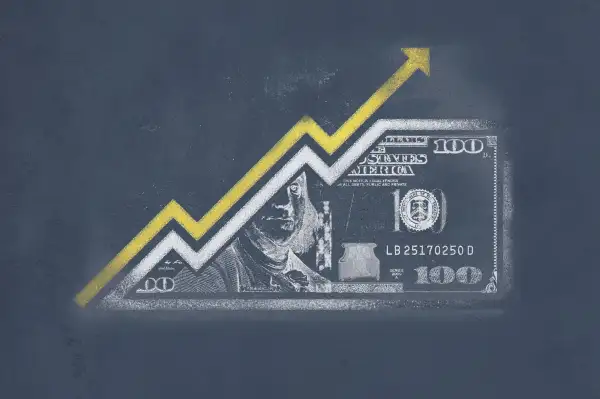A Simple Way to Get Students to Borrow More Responsibly, According to New Research

The first major financial decision many young people make is whether to attend college and how to pay for it. And as tuition has climbed, the consequences of that decision have amplified, with years of debt repayment on the line.
Could a course in personal finance help teens make smarter borrowing decisions? New research suggests it can.
Researchers at Montana State University found students from states that require personal finance coursework to graduate high school are more likely to shift from high-cost borrowing to low-cost borrowing to finance their college degree.
“There are some [borrowing] decisions that are going to reflect a smarter money management strategy than others, and we wanted to see if financial education classes influenced that, “ says Carly Urban, an associate professor of economics at Montana State University and co-author of the study.
Specifically, the study shows students who were exposed to financial education were more likely to apply for federal financial aid and more likely to take out a federal loan—roughly equivalent to a 10% increase in usage versus those without financial education, Urban says.
Results varied predictably based on family demographics. In higher income families, which are more likely to have the credit required to borrow private loans, students who were exposed to personal finance lessons had an even larger average drop in private loan amounts—nearly $2,400. Students from families with fewer resources ended up working fewer hours and instead relied more on federal loans. (Working more than 15 hours a week is linked with poorer academic outcomes.)
This isn’t the first time Urban has studied personal finance education. In 2014, she was part of a team of researchers that found students in three states that recently started requiring personal finance education had higher credit scores and lower delinquency rates than students in bordering states.
'Making Better Financial Decisions'
Urban's research is so powerful because it measures actual behavior, says John Pelletier, director of the Center for Financial Literacy at Champlain College. There’s a lot of existing research tied to financial literacy, but simply having knowledge about, say, the usefulness of a budget, doesn’t necessarily make you more likely to maintain one.
“What we’re seeing is people who got this education seem to be making different and better financial decisions,” he said.
Financial literacy among young people, and Americans in general, is pretty poor. Only 37% of respondents to the most recent National Financial Capability Study answered four out of five financial questions correctly, and less than one-third could answer a question about compound interest. Results from the 2015 PISA financial literacy exam show that fewer than one in six 15-year-olds in the U.S. meet a basic financial proficiency, equivalent to making simple decisions on everyday spending.
Student loans, meanwhile, have become the second largest household debt component, with higher delinquency rates than other forms of debt.
Still, the concept of devoting more resources to financial education in K-12 schools is surprisingly controversial. That’s in part because a lot of earlier research on the topic found mixed results: either small positive growth or nothing at all.
But Urban says it’s too soon to make any judgments about the long-term effects of personal finance education. Prior to 2000, only four states had a requirement to teach financial education. And even today, what qualifies as meeting a financial education mandate can be quite lax.
“Saying that there’s financial information offered in the school is not the same as saying students are exposed to quality financial education curriculum,” she says.
The First Steps
One of the keys for quality is giving teachers the tools to feel comfortable talking about what's often seen as a taboo topic. Only about 25% of teachers in high school social studies—the area that economics and personal finance often fall under—have taken more than two courses in economics, says Anand R. Marri, dean of the school of education at the University of Rochester. Marri used to oversee outreach and education for the Federal Reserve Bank of New York.
“If you’re not teaching the teachers, no matter what legislation you’re going to pass, it’s not going to be effective,” he says.
The JumpStart Coalition for Personal Financial Literacy, in a new campaign to push for more high-quality courses in schools, says effective financial education at the high school level requires a minimum of 70 hours of instruction from a teacher with a certificate in financial education.
The research from Montana State comes in the midst of a flurry of state legislative activity around financial education. Pelletier, at Champlain College’s Center for Financial Literacy, has been producing a state-by-state report on the topic every two years since 2013. In that time, he’s never seen as much movement as in the past year and a half. Since the end of 2017, seven states have passed substantive improvements to their financial education guidelines, and there are several states that still have legislation pending, he says.
Including financial education into learning standards is the first step for many states, but that alone likely won't move the needle on financial literacy. In a case study that compared school districts that required personal finance to graduate with districts that offered it an as elective, Urban found that simply offering the course had no measurable effect.
"You have to be all in," Urban says. "It's not going to change outcomes if you have a very loose or wishy washy policy. There has to be enforcement and implementation."
This article has been updated to correct the year that the state-by-state reports from the Center for Financial Literacy at Champlain College began. The number of economics courses most high school social studies teachers take was also updated.
